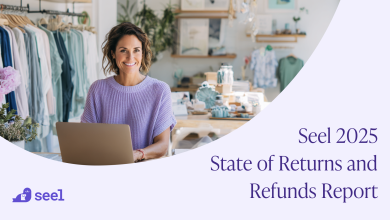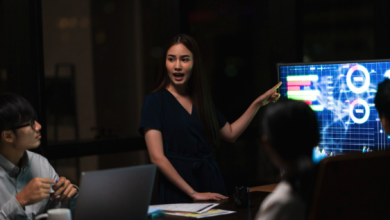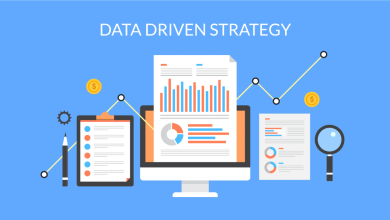
The idea that artificial intelligence can genuinely boost human creativity is getting more and more attention. I’ve observed that many writers, designers, and artists often run into a snag where they’re constantly wrestling with tons of devices and apps, which actually gets in the way of their creative work. This problem pointed to the need for a solution like AI-powered eyewear, a technology designed to put voice assistants and generative AI together in a simple, hands-free format.
Many AI solutions disappoint creatives because they become just another platform to manage rather than a stress reliever. The challenge, therefore, has been weaving AI into an unobtrusive wearable that’s instantly useful in everyday tasks. The best testament to its value is when people keep using it long after the trend fades.
AI-Powered Eyewear as a Hands-Free Creative Assistant
When I talk about “hands-free,” I’m referring to an experience that does away with the old cycle of pausing your work, searching for a device, and wrestling with software. Instead, you speak your intent in the air, like “Record my brainstorming ideas,” “Find relevant imagery for this concept,” or “Outline the next scene in my script.” The AI captures or generates information instantly, with minimal interruption to your mental flow. This matters because creativity often hinges on continuity—once you’re pulled out of a productive headspace, it’s not easy to snap back.
In practice, these glasses offer voice-activated note-taking, real-time text generation, and quick research capabilities. For example, a storyboard artist needs to recall specific details from a past project. Instead of sifting through folders or searching old emails, they can simply request a summary while continuing to sketch. Some also leverage AI suggestions for drafting dialogue or adjusting tone in real time. The creative process stays fluid, unencumbered by the typical friction of device-based multitasking.
Meanwhile, a major concern for many professionals is screen fatigue. Especially in artistic and writing circles, we spend hours staring at monitors. AI-powered eyewear reduces that strain by placing necessary info by delivering it via audio. Over time, this lower visual engagement helps people stay more focused and less drained.
Real-Time Collaboration & Communication
One of the more surprising but powerful applications of AI glasses is their role in streamlining collaboration. Regardless of whether you’re a solo freelancer or part of a sprawling creative department, working with others often requires juggling calendars, project management tools, and video calls. AI-powered eyewear brings all these threads together in a hands-free format. Colleagues can leave voice notes on shared documents, clients can provide quick feedback during a live demo, and project updates can be heard in real time without derailing your workflow.
I find this especially useful for a remote workforce where teams are scattered across time zones. Let’s say a client from another country is evaluating your design drafts. You can simultaneously walk them through each concept while your glasses display their key feedback as live text. There’s less scramble to switch between apps or rummage through attachments. The glasses also support real-time translation, so language barriers become far less disruptive. All of this keeps the momentum of collaboration strong and consistent.
The Ultimate Productivity Tool
Smart glasses once seemed futuristic. They even bordered gimmicky. However, with the maturation of AI—especially generative systems like ChatGPT—these devices have transformed from fleeting trends to necessity. My own work has focused on seamlessly integrating these language models into eyewear so that creativity doesn’t stop the moment you step away from a desk.
Data security, however, is still a critical element many organizations overlook. Creatives often deal with sensitive or proprietary material. That’s why the approach I advocate is de-identifying user data before processing to ensure the AI doesn’t store personally revealing details. Additionally, storing user interactions on secure servers prevents unauthorized access, a step that’s vital for teams who handle confidential projects. It’s not enough for AI to be convenient—it must also be trustworthy. Otherwise, you risk exposing private information or losing the trust of your clients and other collaborators.
Another key principle is the idea of a “killer app.” For many, that’s voice integration with AI. They don’t want yet another standalone piece of software to learn. Creatives crave an existing voice assistant enhanced by advanced AI capabilities. This direct, no-fuss approach addresses real pain points, such as transcribing meeting notes or generating quick creative prompts. If you want to integrate AI into your workflow (or your business), identify that one standout function that solves a genuine opportunity. Everything else should be secondary.
What’s Next for AI Eyewear
The ongoing evolution of AI in eyewear will likely refine countless subtleties in how we work. Already, there’s promising research into using AI to optimize lens precision for those with vision requirements, ensuring the hardware itself evolves alongside the software. We’ll probably see better voice-recognition systems tuned for specific industries like architecture, game design, or filmmaking that offer domain-specific features. Maybe an architect can already request, “Overlay a 3D model of the building facade here,” and see a holographic preview right through the glasses.
I also expect more robust onboarding experiences. Current users often learn best by diving in, but as AI grows more nuanced, the need for guided tutorials will rise. Businesses that adopt AI glasses at scale might roll out tailored training programs so employees can leverage the technology to its fullest without confusion or fear.
AI-powered eyewear is a window into a hands-free future where creativity thrives in new ways. As someone who’s dedicated to refining these tools, I’m continually amazed by how they unlock new heights of productivity and freedom. And I firmly believe the next few years will show us just how integral they can become in shaping the future of creative work.




